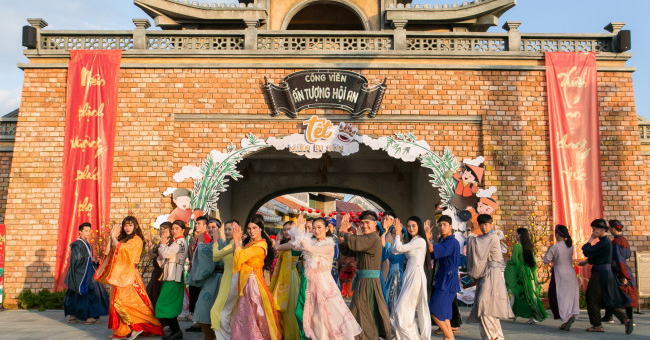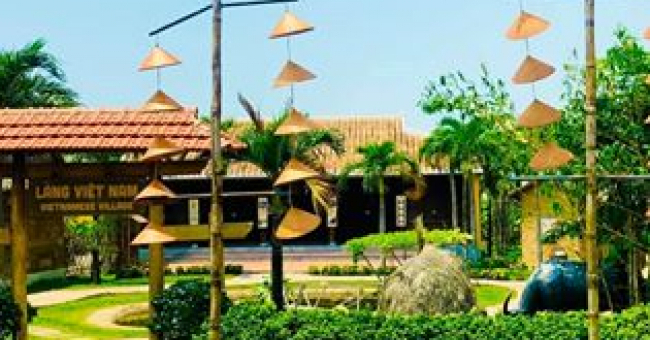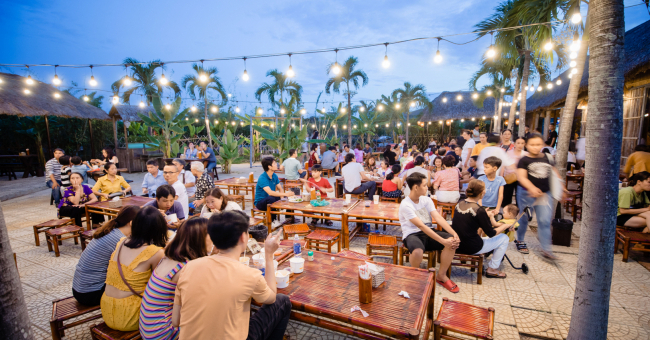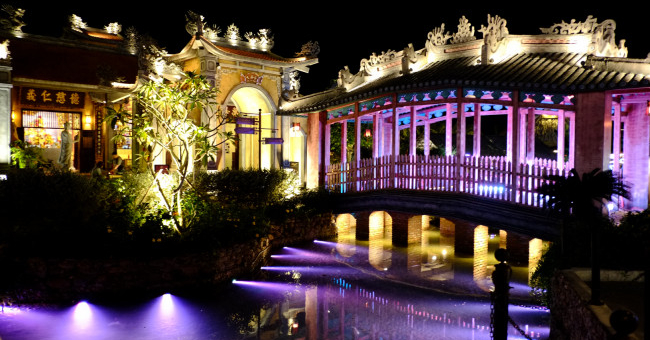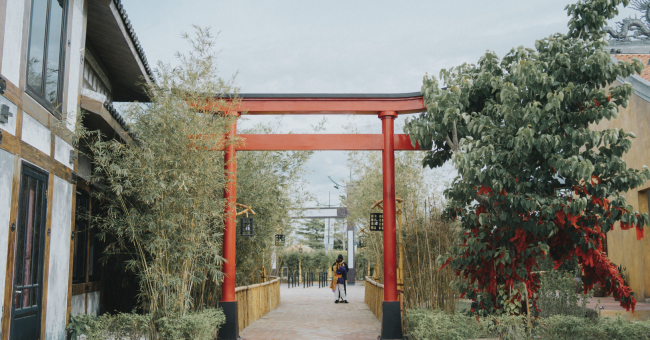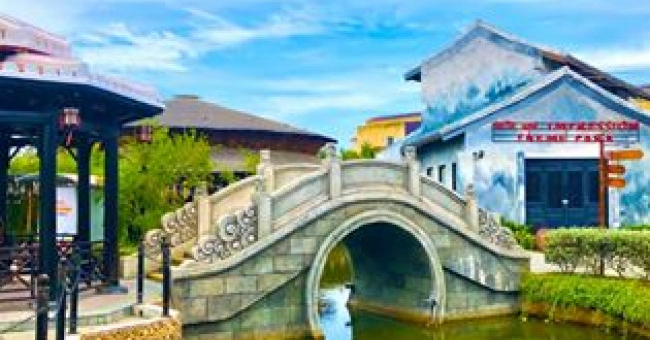
Hoi An Impression Theme Park Entrance gate
The gate was built in the style of Thanh Chiem Palace, the place marking the development of Dang Trong in Tien Nguyen Hoang dynasty. Tourists coming to the park will first pass the entry gate to arrive in the historical atmosphere dating back to the time when Tien Lord established the region, building up a prosperous Hoi An.
Trade Quarters
Hoi An Trading Port was a busy international commercial gate during 17th and 18th centuries. From the west, merchants from the Netherlands and France and evangelists from Portugal, among the others, stopped by here and built up commercial firms to buy local products such as additives, tea, china, silk products. Thanks to these people, buildings bearing the styles of the Netherlands and France emerged, completing the big picture of Hoi An in those days.
Vietnamese Village
With familiar architecture like the traditional three-compartment houses of Vietnamese villages, surrounded by fish ponds, stubbles, buffalo, and wells behind the summer. In the Vietnamese Village, visitors will experience and learn about traditional craft villages such as making conical hats, lanterns, and bronze casting.
Sprituality section
Vietnamese people's life has always been associated with spirituality and religions. Pagodas, temples or shrines are common sights in the Vietnamese community. The spirituality section shows the typical architecture of Hoi An people in particular and Vietnamese people in general.
Central Square
Stepping into the bustling port of Faifo, experiencing interesting interactive activities with merchants, soldiers, matchwoman, and rich men... The "Nguyen Lord Recruited Soldiers" minishow reenacts the heroic atmosphere when people responded to the call to protect their homeland. The "Silk Queen Tam Tang" minishow depicts the origin of Vietnamese silk, the love between a girl picking mulberries and raising silkworms and Nguyen Phuc Lan Prince.
Japanese village
There were up to about six or seven hundred people in the Japanese community in Hoi An during 17th and 18th centuries. Japanese culture reflects strongly in works of architecture, culture and cuisine of the Hoi An people. Japanese village is where the stories conveying the Japan-Vietnam relationship is represented.
Chinese Village
Stepping into the ancient town where Minh Huong restaurant captivates tourists with exquisite Chinese dishes like Wonton, and shrimp dumplings... Above is Phong Nguyet Tower, where the minishow "Happy Forest" takes place, bringing tourists into the regal entertainment world of the upper-class and ancient merchants.
Non la Restaurant
Prominent with an impressive design, meticulously designed from traditional bamboo, the Non La Restaurant possesses a unique space for enjoying distinctive cuisine. Here, Northern, Central, and Southern cuisines are delicately prepared to preserve their unique flavors in a way that suits the tastes of our valued visitors.




